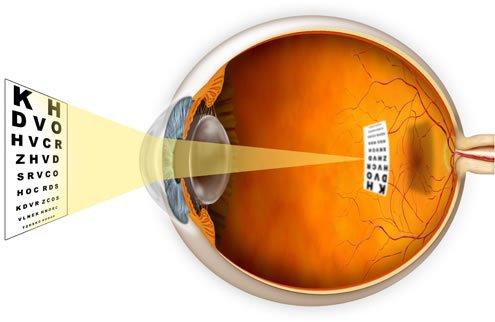
British scientists identified 24 genes containing information that could lead to a drug to stop many children becoming short-sighted.
The discovery could spare families from spending a fortune on contact lenses, as well as the expense of laser surgery.
More importantly, the discovery would mean future generations would no longer be at risk of developing complications of short-sightedness that can lead to blindness in later life.
Short-sightedness is becoming more common as we spend more time indoors and in front of TV and computer screens.
Caused by overgrowth of the eyeball, it usually starts developing in childhood, and in severe cases can lead to macular degeneration and other forms of blindness.
The fact that the condition runs in families means that genes are involved.
Almost three years ago, the first gene that causes short-sightedness was identified by King’s College London researcher Chris Hammond.
Now, leading an international team of scientists and trawling through genetic data from 45,000 people from around the world, including the UK, he has found many more.
Prof. Chris Hammond said: “This study reveals for the first time a group of genes involved with myopia and that carriers of some of the genes have a ten-fold increased risk of developing the condition.”

Working out what the genes do and what goes wrong in short-sightedness could lead to eye drops or other drugs to treat the condition.
Prof Chris Hammond, whose research is detailed in the journal Nature Genetics, said: “Now we understand more about the genetic triggers for the condition, we can begin to explore other ways to prevent progression.
“It is an extremely exciting step forward which could potentially lead to better treatments or prevention in the future for millions around the world.”
However, the need for more research, plus rigorous testing, means any drug to prevent the condition is at least 15 years away.
As it would be aimed at children, it would have to be proved not to slow their overall growth, while still stopping their eyeballs from overdeveloping.
And genes are not the only factor behind the development of short-sightedness. A child’s lifestyle also plays a role, with too much time spent in front of a screen and lack of sunlight helping fuel the condition.